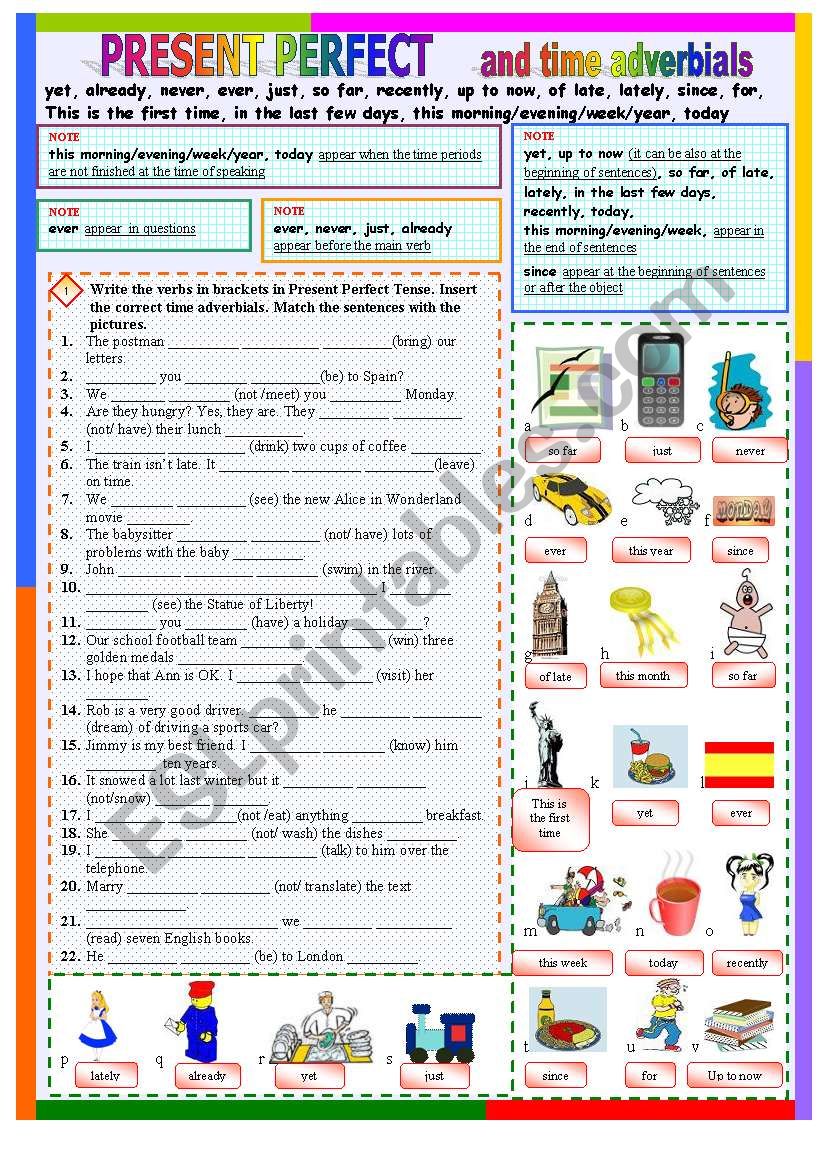
PRESENT PERFECT and time adverbials ESL worksheet by Tasha899
Exercises. Open in a new tab: Time Adverbs with Present Perfect (66) exercises. Time adverbs are often used with the present perfect and function as modifiers of other elements in the clause.
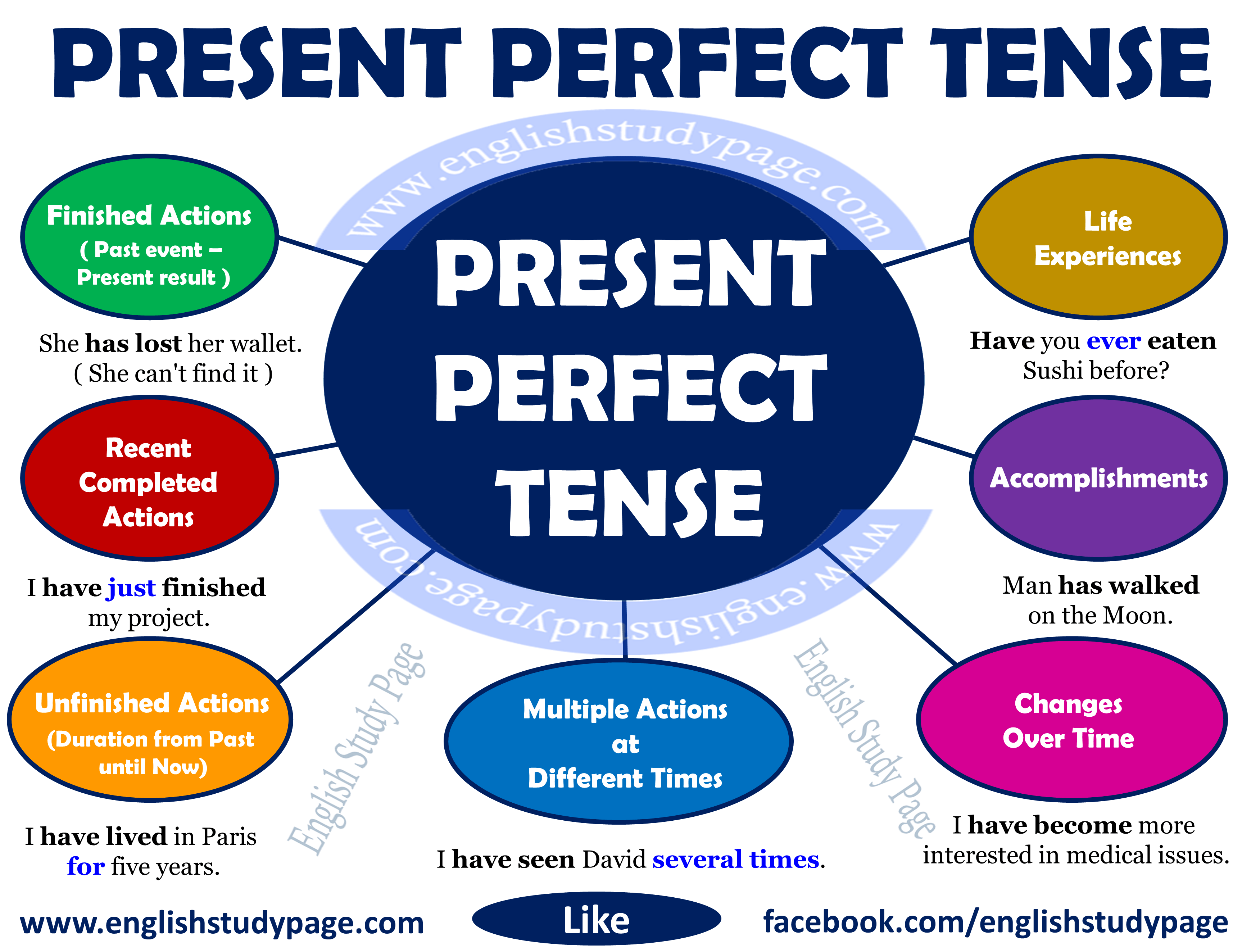
Present Perfect Tense English Study Page
Time adverbs used with the present continuous tense. The present continuous tense is used to talk about actions and situations that are in progress at the moment of speaking. The following time expressions are commonly used with the present continuous tense: today, at present, at the moment, still, now etc. I am working on a new project now.

Present perfect interactive and downloadable worksheet. Check your answers online or send them
It just means 'at that time'. Compare these two examples: I lived in Germany then. (past) I'll be living in Germany then. (future) 6. Past, present and future. Adverbs of time can also show us whether the action is happening in the past, present or future. Past.

How to use Present Perfect Continuous grammar (Free PDF) World English Blog
Adverbs of time that express an exact number of times the action happens usually work best at the end of a sentence. For example: The newspaper arrives daily. They go out to dinner weekly. Our family goes on an outing monthly. When using more than one adverb of time in a sentence, use them in the following order: 1.

Present Perfect with adverbs and prepositions of time YouTube
Adverbs of definite time can be simple, indicating a certain moment in time: Today. Tomorrow. Yesterday. Or more complex ones containing such additional words a s this, that, last, next, ago, etc. Using these words and adverbs of time, we can form many different combinations: last year. next year.

Common Time Adverbs Used with the Present Perfect Tense English Grammar Tenses, Teaching English
The present perfect tense is not used with adverbs of past time. Examples are: yesterday, last week, last year etc. Cases where the present perfect tense cannot be used We do not use the present perfect tense when we say when something happens. In such cases, we use the simple past tense. I saw Rani yesterday. (NOT I have seen Rani yesterday.)
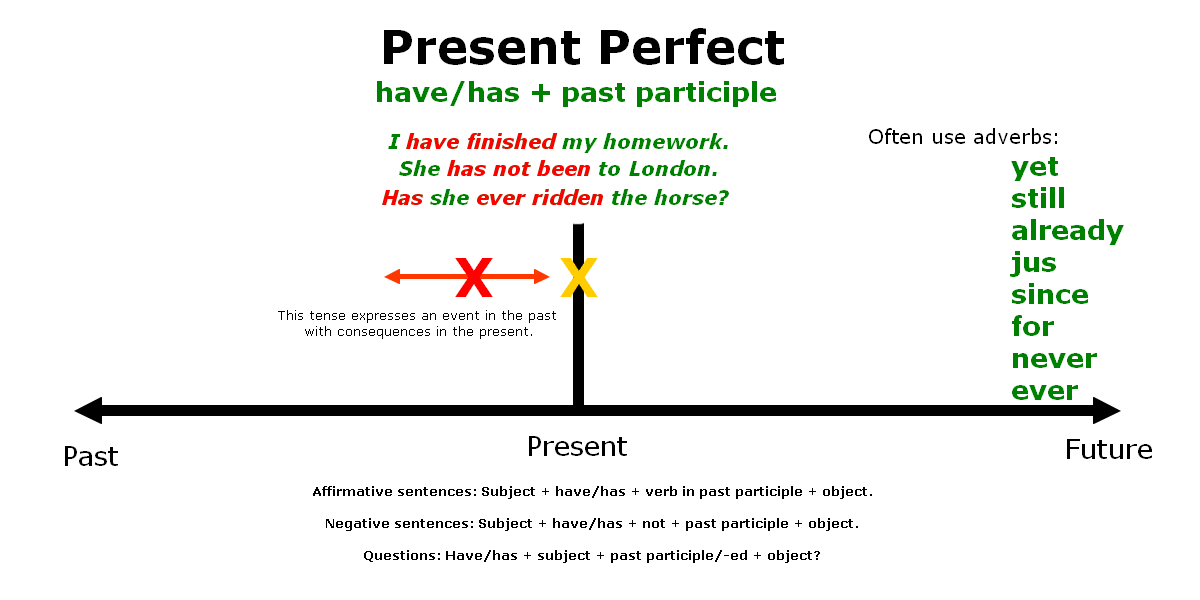
Present perfect tense
Adverbs for a Length of Time. When we want to describe how long something has happened or will happen, we can use these adverbs: for. since. We use 'for' with a period of time, which could be in the present, past or future. While we use 'since' with a fixed point in the past, so it's only used with the present perfect simple and.

Time Adverbs Used with the Present Perfect Tense • 7ESL
The present perfect tense is not used with adverbs of past time. Examples are: yesterday, last week, last year etc. Cases where the present perfect tense cannot be used. We do not use the present perfect tense when we say when something happens. In such cases, we use the simple past tense. I saw Rani yesterday. (NOT I have seen Rani yesterday.)
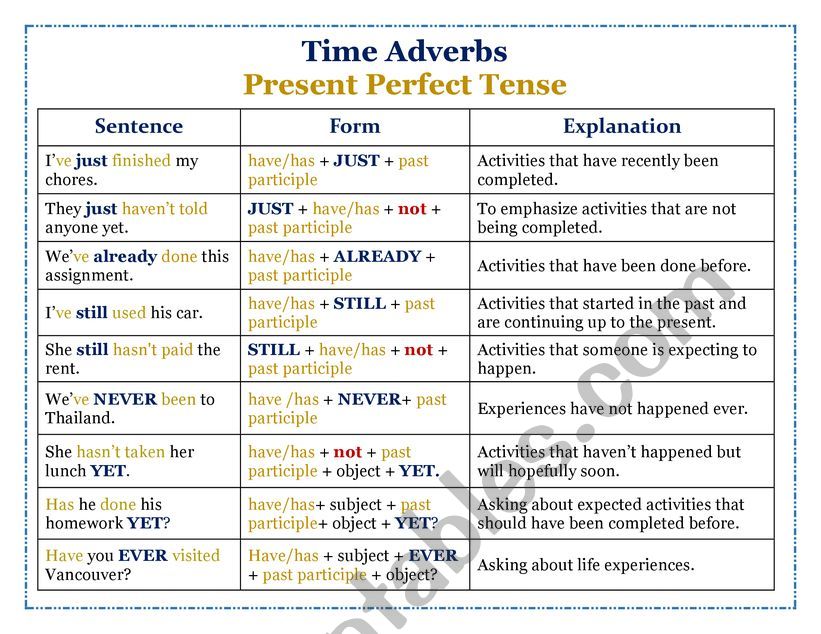
Time Adverbs Present Perfect ESL worksheet by TeresitaSePa
The present perfect continuous tense. The present perfect continuous tense is commonly used with the time expressions since and for. It has been raining since yesterday. I have been working in this company for 3 years. My sister has been preparing for the civil services exam for six months. Simple past tense. The simple past tense is commonly.

Adverbs Of Time Using and Examples in English English Grammar Here
Present Perfect. Used with adverbs describing a time that started in the past and continues right up to the present time (e.g. I have studied every day this week). Used with an adverb that marks a specific point in time (e.g. I have studied today). Used when speaking about an event that happened in the recent past (e.g.

Present Perfect Adverbs Ever Never Yet Already Present Perfect Tense adverbs of time YouTube
Using Adverbs With The Present Perfect Continuous Tense. The present perfect continuous tense can be used with adverbs, specifically adverbs of time or frequency, as these express how long the action verb has been going on and gives context to the sentence.. You can use the following expressions of time:

TeacherZule PRESENT PERFECT Forms, Uses and Adverbs of Time YouTube
Last updated on July 17, 2019 by 7ESL. 14.2k. Adverbs of Time! Learn commonly used Time Adverbs Used with the Present Perfect Tense in English with examples. The present perfect tense is commonly used with the indefinite time adverbs (time expressions) just , never, ever, never, since, for, before, yet, already.

The Key to Recognizing the English Tenses Adverbs of Time English vocabulary words learning
In this English lesson we will learn how to use ADVERBS with the Present Perfect Tense.The adverbs we will look at are: Just, Ever, Never, Still, Yet, Alread.
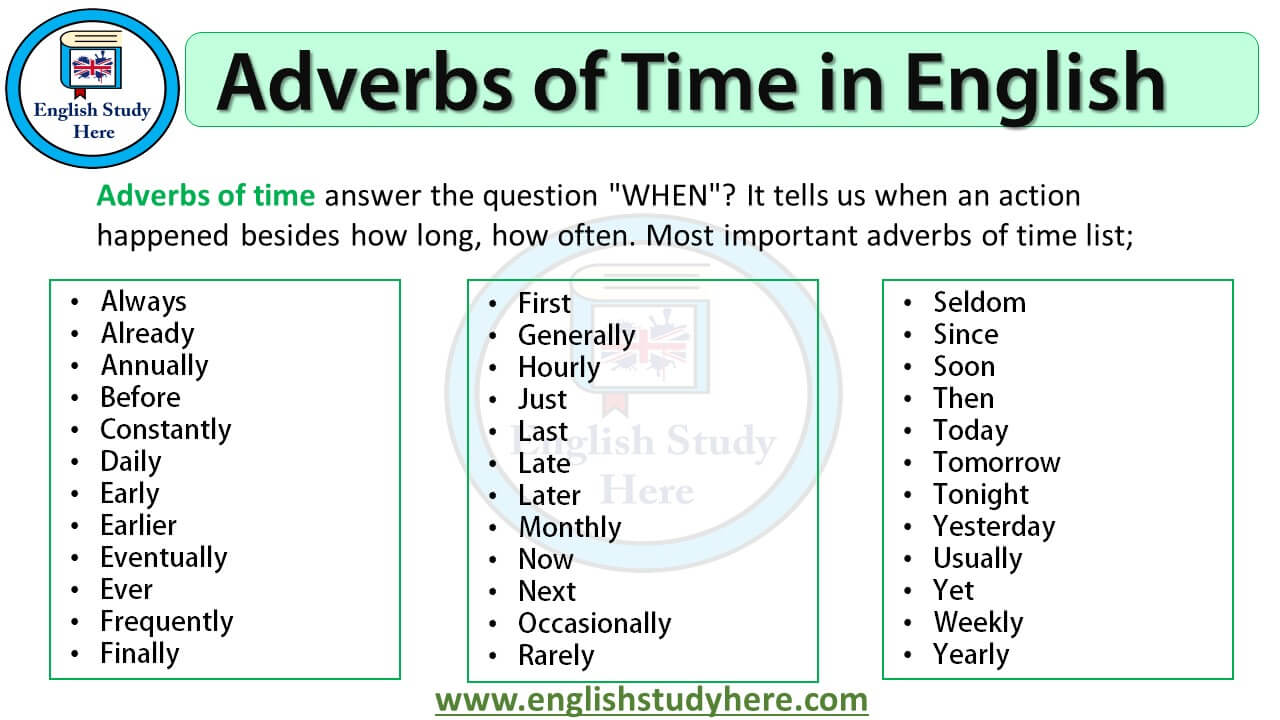
Adverbs of Time in English English Study Here
STILL - Events that continue to happen after a long time. The adverb STILL can be used with the present perfect tense to express that we have waited a long time for something to happen or be done and it hasn't happened yet. This situation continues to happen. When used in the present perfect tense, it is normally in negative sentences.
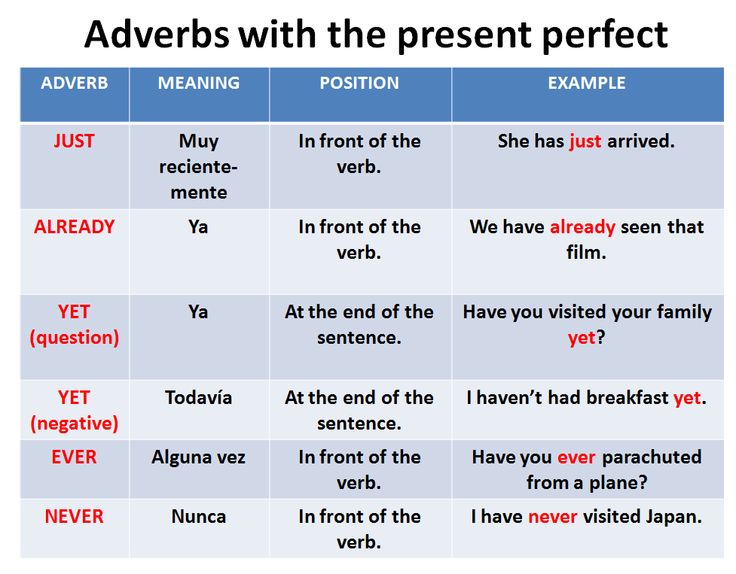
12 Adverbs for present perfect My Grammar Scrapbook
2 Answers. Yes. If you are telling the truth, it means you have read ten books since the start of 2023. You might read more in the rest of the year. Pragmatically, and considering the number of books, and the nature of the claim, I'd assume that this actually means you have read and completed ten books. Otherwise it is a pretty weak claim.
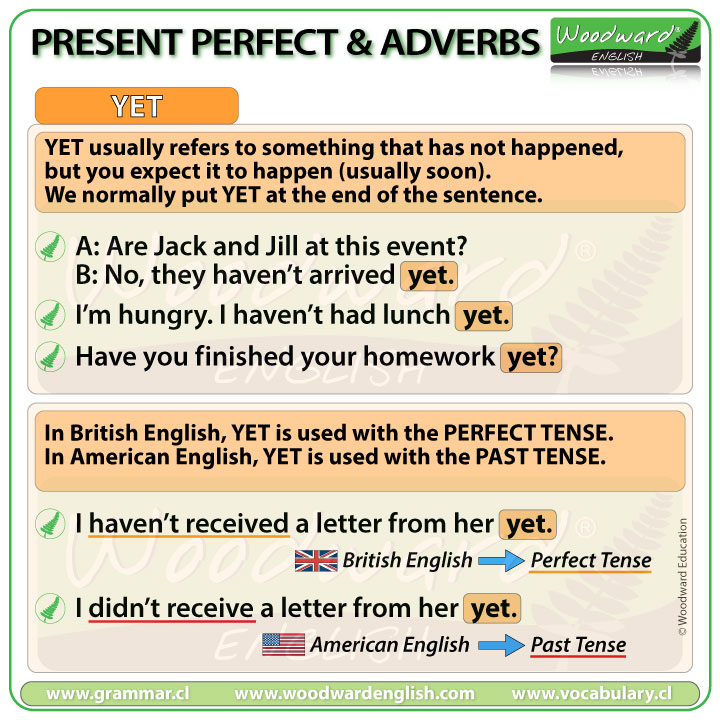
Adverbs with the Present Perfect Tense Woodward English
The present perfect is formed from the present tense of the verb have and the past participle of a verb. We use the present perfect: for something that started in the past and continues in the present: They've been married for nearly fifty years. She has lived in Liverpool all her life. when we are talking about our experience up to the present: